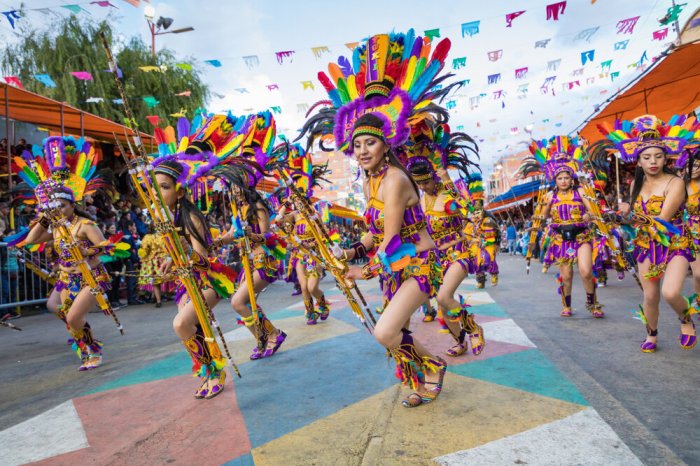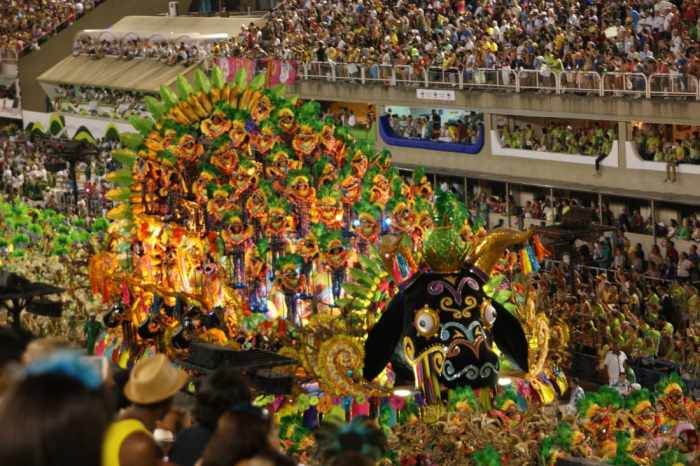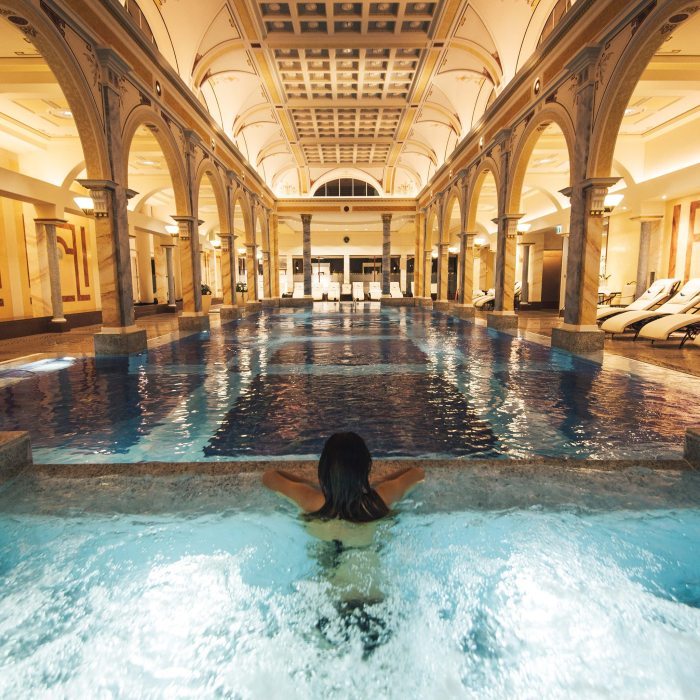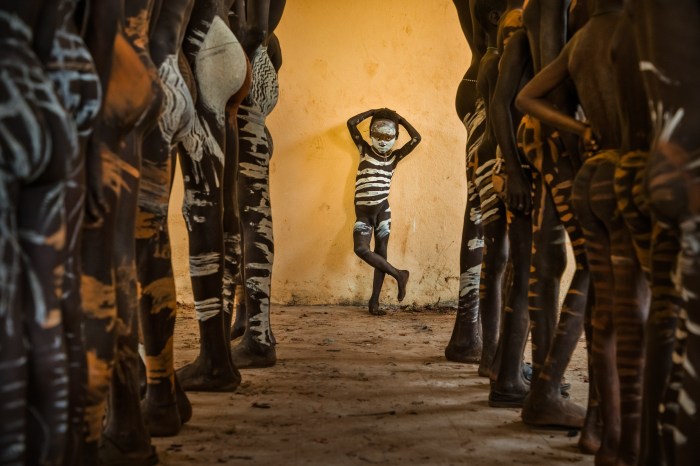
Carnival Celebrations in South America offer a vibrant tapestry of cultural expression, historical echoes, and dazzling spectacles. From the electrifying samba parades of Rio de Janeiro to the deeply spiritual processions of Oruro, Bolivia, and the exuberant street parties of Barranquilla, Colombia, each region boasts unique traditions and customs. This exploration delves into the origins, evolution, and diverse manifestations of Carnival across South America, highlighting its economic impact, social significance, and its enduring role in preserving cultural heritage.
Carnival Celebrations Overview in South America
Carnival in South America is a vibrant tapestry woven from indigenous traditions, European influences, and centuries of cultural exchange. Its origins are multifaceted, drawing from ancient pre-Columbian festivals celebrating harvests and the cycles of nature, later blended with the Catholic calendar’s pre-Lenten celebrations. Over time, these celebrations evolved, developing unique regional characteristics while retaining a common thread of joyous revelry and communal participation.
Historical Origins and Evolution of Carnival in South America
The historical roots of South American Carnival are deeply intertwined with both indigenous and European cultural practices. Pre-Columbian societies across the continent held festivals that often involved elaborate costumes, music, dance, and symbolic rituals linked to agricultural cycles and spiritual beliefs. The arrival of the Spanish and Portuguese brought with them their own Carnival traditions, rooted in Catholic observances preceding Lent.
A fascinating synthesis occurred, resulting in the diverse Carnival celebrations we see today. In some regions, indigenous elements remain prominent, while in others, the European influence is more dominant. This blending, however, is what makes South American Carnival so uniquely rich and diverse. For instance, the use of vibrant colours and intricate masks, often reflecting both indigenous iconography and European styles, demonstrates this beautiful fusion.
Comparison of Carnival Traditions in Brazil, Colombia, and Argentina
While sharing a common festive spirit, Carnival celebrations in different South American countries exhibit unique traditions and customs. In Brazil, particularly Rio de Janeiro, Carnival is synonymous with extravagant samba parades, featuring elaborate floats and thousands of dancers representing various samba schools competing for coveted prizes. The emphasis is on spectacle, music, and dance, creating a vibrant and energetic atmosphere.
Colombia’s Carnival celebrations, particularly in Barranquilla, are known for their vibrant street parades, featuring traditional dances like the “cumbia” and “gaita,” alongside intricate costumes reflecting the country’s diverse cultural heritage. The focus here is on spontaneity, community participation, and the preservation of indigenous and Afro-Colombian traditions. Argentina’s Carnival, while less globally renowned, often features smaller, more localized celebrations, emphasizing street parties, water fights, and the use of colourful confetti and streamers.
The emphasis tends to be on community bonding and playful interaction.
Significance of Music, Dance, and Costumes in South American Carnival, Carnival Celebrations in South America
Music, dance, and costumes are integral to the spirit and meaning of Carnival celebrations across South America. Music provides the pulsating heartbeat of the festivities, ranging from the rhythmic samba of Brazil to the infectious cumbia of Colombia. These musical styles often incorporate traditional instruments and melodies, reflecting the rich cultural heritage of each region. Dance serves as a powerful means of expression, storytelling, and communal bonding.
Elaborate choreographies, often involving hundreds or even thousands of participants, showcase the skill and creativity of the performers. Costumes are not mere attire but symbolic representations of cultural identity, social commentary, and historical narratives. They can be intricate and elaborate, incorporating local materials and craftsmanship, showcasing both artistic skill and the wearer’s pride in their community.
| Country | Costume Description | Symbolic Meaning | Materials Used |
|---|---|---|---|
| Brazil | Elaborate feathered headdresses, sequined costumes, and brightly colored outfits reflecting samba school themes. | Representation of samba school themes, often allegorical or historical. Showcases creativity and skill. | Feathers, sequins, beads, fabrics, glitter. |
| Colombia | Intricate masks representing animals, mythical creatures, or cultural figures. Colorful, often layered costumes reflecting regional traditions. | Preservation of cultural heritage, celebration of regional identity, and representation of folklore. | Fabrics, beads, feathers, wood, papier-mâché. |
| Argentina | Less elaborate than Brazil or Colombia; often involves simple but colorful clothing, with emphasis on face paint and accessories. | Celebration of community spirit, playful interaction, and a release of inhibitions. | Simple fabrics, face paint, confetti, streamers. |
Regional Variations in Carnival Celebrations: Carnival Celebrations In South America
Carnival celebrations across South America, while sharing a common thread of vibrant festivities, music, and dance, exhibit remarkable regional diversity reflecting the unique cultural heritage and traditions of each location. These variations extend beyond mere costume differences, encompassing the very essence of the celebration, its duration, and its social and religious significance. Exploring these regional distinctions provides a deeper appreciation for the richness and complexity of Carnival in South America.
Rio de Janeiro Carnival: Samba Schools and Spectacle
Rio de Janeiro’s Carnival is arguably the most internationally renowned, a breathtaking spectacle of elaborate samba school parades. These parades, featuring thousands of performers in dazzling costumes and floats, are the heart of the Rio Carnival. Each samba school spends months preparing, crafting intricate costumes and building massive floats depicting a chosen theme. The parades are judged on various criteria, including choreography, costume design, and musicality, creating a fiercely competitive atmosphere.
The energy and scale of these events are unparalleled, transforming the city into a vibrant, pulsating mass of color, music, and dance. Beyond the main parades, street parties known as “blocos” add to the festive atmosphere, with spontaneous celebrations filling the streets with music and revelry.
Oruro Carnival: Andean Tradition and Religious Syncretism
In stark contrast to the spectacle of Rio, the Oruro Carnival in Bolivia is a deeply spiritual and cultural event, deeply rooted in Andean traditions and Catholic beliefs. This UNESCO World Heritage event is a vibrant expression of syncretism, blending indigenous beliefs with Catholic rituals. The celebration involves a massive procession of dancers, representing various mythical figures and religious icons, who dance for hours through the streets.
The dancers, often in elaborate costumes representing specific roles within the narrative, perform intricate choreographed routines. The overall experience is a powerful testament to the enduring cultural heritage of the Andean region, highlighting the interplay between indigenous beliefs and the Catholic faith.
Barranquilla Carnival: A Unique Colombian Celebration
Barranquilla’s Carnival in Colombia possesses a unique character, distinct from celebrations in other Colombian cities. While many Colombian cities celebrate Carnival with street parties and parades, Barranquilla’s Carnival is known for its elaborate and highly structured events, featuring distinctive dances and traditions. The city’s Carnival is renowned for its “cumbia,” a traditional dance style, and its unique characters such as “Joselito,” a mischievous and playful figure.
Unlike some other regions where Carnival celebrations are more localized or community-based, Barranquilla’s Carnival draws massive crowds from across the country and internationally, showcasing a unique blend of Colombian culture and traditions. The intensity and focus on specific traditional elements differentiate it from the celebrations found in other Colombian cities, which might exhibit a greater emphasis on local customs and less organized, more spontaneous celebrations.
Carnival Length and Timing Across South America
The timing and duration of Carnival celebrations vary significantly across South America. This is influenced by both religious calendars and local traditions. Understanding these differences helps to appreciate the diverse ways in which this important cultural event unfolds across the continent.
- Brazil (Rio de Janeiro): Typically four days, culminating on Shrove Tuesday (Mardi Gras).
- Bolivia (Oruro): A single, intense day, coinciding with the Catholic celebration of Candlemas, usually falling in February.
- Colombia (Barranquilla): Four days, generally beginning on Saturday before Ash Wednesday.
- Argentina (Gualeguaychú): Several weekends leading up to Ash Wednesday, known for its elaborate corso (parade) featuring carrozas (floats).
- Ecuador (Guayaquil): Celebrations span several days, culminating on Shrove Tuesday, characterized by parades and street festivities.
Economic and Social Impact of Carnival

Carnival in South America, particularly in major cities like Rio de Janeiro, generates significant economic activity and plays a crucial role in the social fabric of participating communities. Its impact extends far beyond the immediate festivities, influencing various sectors and shaping cultural identity.The vibrant spectacle of Carnival draws millions of tourists annually, injecting substantial revenue into the host city’s economy.
This influx of visitors stimulates demand across multiple sectors, creating employment opportunities and boosting local businesses.
Economic Impact on Tourism and Local Businesses in Rio de Janeiro
Rio de Janeiro’s Carnival is a prime example of the economic power of this celebration. The influx of tourists generates significant revenue for the city through hotel bookings, restaurant patronage, transportation services, and the sale of souvenirs and other goods. Local businesses, from small street vendors to large hotels, experience a surge in sales during the Carnival period.
The economic impact extends beyond the immediate festival days, as the anticipation and planning for the event create jobs and stimulate economic activity months in advance. For example, the creation of elaborate floats and costumes necessitates the employment of artists, designers, and skilled laborers. Furthermore, the increased demand for accommodation and services leads to investments in infrastructure and improvements to existing facilities.
Estimates suggest that the Carnival in Rio de Janeiro contributes billions of reais to the city’s economy annually. This figure encompasses direct spending by tourists, indirect economic activity generated by supporting industries, and the tax revenue collected by the city government.
Social Significance of Carnival as a Unifying Event
Carnival serves as a powerful unifying force within Brazilian communities and beyond. It transcends social and economic barriers, bringing people together in a shared experience of celebration, music, and dance. The parades and street parties foster a sense of collective identity and pride, reinforcing community bonds and promoting social cohesion. The participatory nature of Carnival, where individuals from all walks of life can actively engage in the festivities, strengthens social connections and fosters a sense of belonging.
The vibrant atmosphere and shared experience create a powerful sense of unity and camaraderie, temporarily setting aside differences and promoting a spirit of inclusivity. This unifying aspect of Carnival is particularly significant in a diverse society like Brazil, where it acts as a catalyst for social integration and cross-cultural understanding.
Role of Carnival in Preserving and Promoting Cultural Heritage
Carnival plays a vital role in preserving and promoting Brazil’s rich cultural heritage. The elaborate costumes, music, dances, and traditions associated with Carnival represent a tangible link to the country’s history and cultural identity. The annual celebration serves as a platform for showcasing and transmitting these traditions to new generations, ensuring their continuity and preventing their erosion. The creation of Carnival floats and costumes often involves intricate craftsmanship and the use of traditional materials and techniques, supporting local artisans and preserving traditional skills.
Moreover, the music and dances associated with Carnival are often rooted in historical and cultural contexts, reflecting the evolution of Brazilian music and dance styles over time. The preservation and promotion of these cultural elements through Carnival contributes to the broader cultural landscape of Brazil, reinforcing national identity and fostering cultural pride.
Luxury Travel Experiences Related to Carnival

Carnival in South America, particularly Rio de Janeiro, offers an unparalleled spectacle. For the discerning traveler seeking more than just a glimpse of the festivities, a range of luxury experiences can elevate this vibrant celebration to an unforgettable adventure. From exclusive access to private island escapes, the possibilities for creating a truly bespoke Carnival experience are vast.
Luxury Carnival Itinerary: Rio de Janeiro
This itinerary focuses on providing a premium experience of Rio’s Carnival, combining the energy of the street parades with the exclusivity of private events and luxurious accommodations. Guests will enjoy unparalleled access and comfort throughout their stay.
Day 1: Arrival and Belmond Copacabana Palace Immersion: Upon arrival at Rio de Janeiro–Galeão International Airport (GIG), guests are greeted by a private chauffeur and transferred to the iconic Belmond Copacabana Palace. Check-in to a luxurious suite overlooking the beach, followed by a welcome cocktail reception and a private dinner at the hotel’s renowned restaurant, featuring traditional Brazilian cuisine with a modern twist. The evening concludes with a private Samba show.
Day 2: Samba School Parade VIP Experience: Enjoy exclusive access to a premium viewing area for the Samba School parade at the Sambodromo. This offers an unparalleled perspective of the elaborate costumes, vibrant choreography, and energetic performances. A dedicated concierge will manage all logistics, including transportation and refreshments. After the parade, a private after-party at a sophisticated club awaits.
Day 3: Christ the Redeemer and Sugarloaf Mountain with Private Guide: A private helicopter tour offers breathtaking views of Rio de Janeiro, including iconic landmarks such as Christ the Redeemer and Sugarloaf Mountain. A private guide provides historical context and insights into the city’s rich culture. The afternoon is dedicated to relaxation at the hotel’s spa, followed by a fine-dining experience at a top-rated restaurant in Ipanema.
Day 4: Departure: A private transfer ensures a seamless departure from the Belmond Copacabana Palace to Rio de Janeiro–Galeão International Airport (GIG).
Carnival & Private Island Getaway Package
This package combines the vibrant energy of Rio’s Carnival with the tranquility of a private island escape, offering a unique blend of excitement and relaxation.
Accommodation & Transportation: Guests will be accommodated in luxurious overwater bungalows on a private island, accessible by private yacht from Rio de Janeiro. The yacht will be available throughout the stay for island hopping and exploring nearby coves.
Activities: The package includes VIP access to select Carnival events in Rio, with private transportation to and from the island. On the island, guests can enjoy a range of activities, including snorkeling, diving, private beach picnics, and sunset cruises. A dedicated personal concierge will cater to all needs and desires.
Sample Itinerary (Illustrative): Three days in Rio attending select Carnival events, followed by four days of relaxation on the private island. The itinerary is customizable to guest preferences.
High-End Travel Accessories for a Luxury Carnival Trip
A luxury Carnival trip demands accessories that reflect both sophistication and practicality.
Examples include a high-quality, lightweight travel suitcase with superior organization features; a stylish and comfortable wide-brimmed hat for sun protection; a luxurious silk scarf with vibrant Carnival-inspired colors; a high-end waterproof camera to capture the unforgettable moments; and a personalized passport holder crafted from fine leather.
Premium Travel Guide: Rio de Janeiro During Carnival
This guide highlights the best culinary, hospitality, and cultural experiences Rio has to offer during Carnival.
Hotels: The Belmond Copacabana Palace, Hotel Santa Teresa, Fasano Rio de Janeiro. These hotels offer luxurious accommodations, exceptional service, and prime locations.
Restaurants: Oro (Michelin-starred fine dining), Mee (innovative Asian cuisine), Aprazível (charming restaurant with stunning views). These establishments offer a diverse range of culinary experiences, showcasing the best of Rio’s gastronomy.
Cultural Experiences: Beyond the Samba School parades, consider attending a private Samba workshop, exploring the vibrant street art scene in Lapa, and visiting the Museu do Amanhã (Museum of Tomorrow) for a unique cultural immersion. Pre-booking is recommended for many of these experiences to secure access during the peak Carnival season.
South American Carnival celebrations transcend mere festivities; they represent a powerful confluence of history, faith, artistic expression, and community bonding. The vibrant costumes, pulsating rhythms, and passionate displays of cultural pride leave an indelible mark on both participants and observers alike. Whether experiencing the opulence of a Rio parade or the soulful traditions of Oruro, the spirit of Carnival endures as a testament to the region’s rich and diverse heritage.
The economic and social impact further underscores its importance, highlighting its contribution to tourism, local economies, and the preservation of cultural identity for generations to come.
Questions and Answers
What is the best time to visit South America for Carnival?
Carnival dates vary slightly each year, falling between February and March. Check specific dates for your chosen destination.
How much does it cost to experience Carnival in South America?
Costs vary greatly depending on location, accommodation choices (budget to luxury), and activities. Budgeting is essential, with options ranging from affordable to extravagant.
Is South American Carnival family-friendly?
While generally family-friendly, some aspects of Carnival, particularly late-night events, may be more suitable for older children and adults. Parental discretion is advised.
What should I pack for a Carnival trip to South America?
Pack light, comfortable clothing suitable for warm weather. Include sunscreen, insect repellent, comfortable walking shoes, and rain gear (depending on the location).


